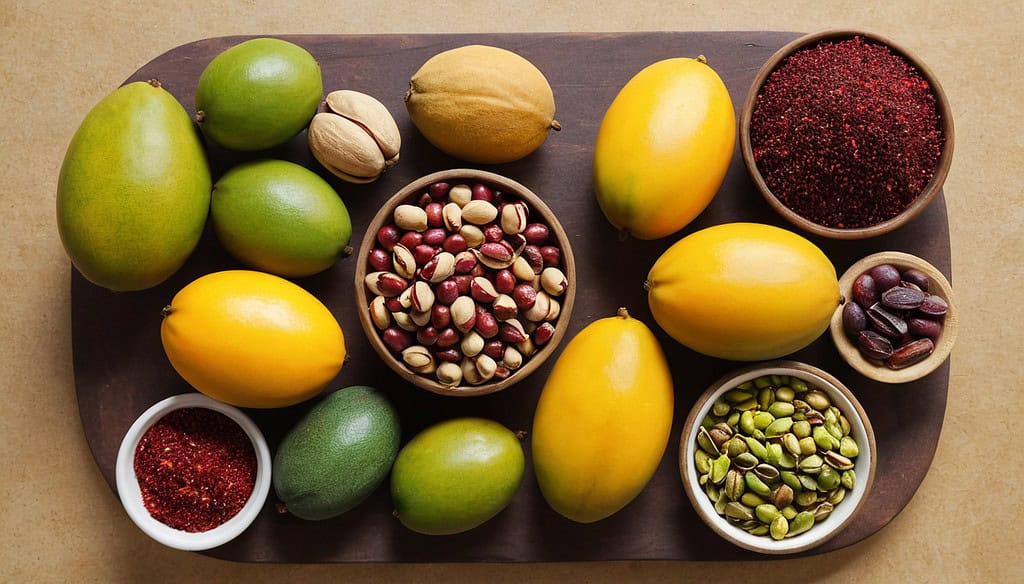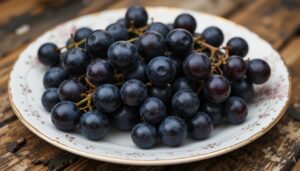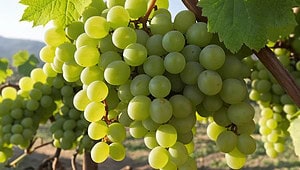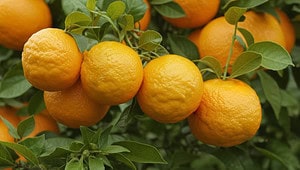Table of Contents
Anacardiaceae Fruits: Nature’s Bliss
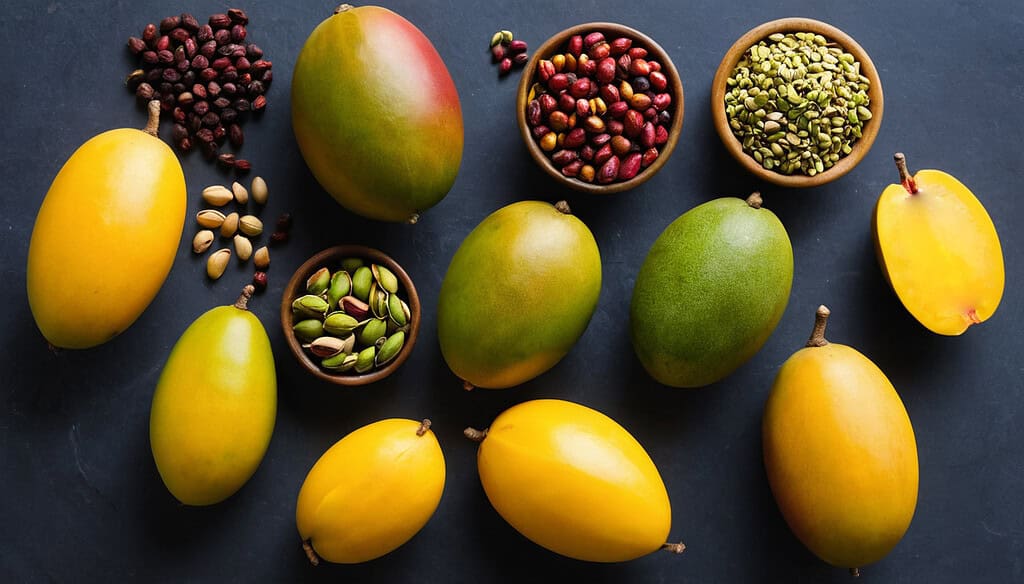
Various Anacardiaceae Fruits
Anacardiaceae fruits stand out as one of the most popular and important fruit families in the world, treasured for their rich diversity and immense value in both nutrition and cuisine. Nature’s bliss comes alive in this group, offering a delightful array of tastes, from the sweet, tropical richness of mangoes to the creamy, savory crunch of cashews and pistachios. These fruits not only captivate taste buds but also enrich diets with essential vitamins, minerals, healthy fats, and antioxidants. Mangoes, for example, are packed with vitamin C and bioactive compounds, boosting immunity and enhancing skin health, while cashews provide essential fatty acids and magnesium, contributing to heart health.
Despite their nutritional benefits, Anacardiaceae fruits come with complexities that make them even more fascinating. Some members of this fruit family, like cashews, require careful processing to remove toxic elements such as urushiol, a substance also found in poison ivy. This delicate balance between delicious, healthful benefits and potential hazards highlights the intriguing nature of this fruit family. Furthermore, many Anacardiaceae fruits thrive in specific climates, predominantly tropical and subtropical regions, making them vulnerable to environmental challenges and fluctuations. This dependence on certain growing conditions poses risks to global food supply chains, especially as climate change continues to impact agricultural practices.
Nonetheless, the worldwide popularity of Anacardiaceae fruits remains strong, and their presence in diverse dishes—from luscious tropical desserts to savory roasted nuts and spiced sauces—demonstrates their culinary adaptability. They symbolize nature’s gift, bridging cultural divides through their universal appeal while also underscoring the necessity of sustainable practices to secure their future. As demand grows, the need for balanced cultivation practices becomes critical, emphasizing the importance of these fruits and their role in nourishing and delighting populations around the world.
Next, we are going to talk about the 8 most important and well-known Anacardiaceae fruits.
1. Anacardiaceae Fruits: Mango

Anacardiaceae Fruits – Mango
Mango, often called the “king of fruits,” is one of the most loved Anacardiaceae fruits worldwide, celebrated for its succulent, juicy flesh and tropical sweetness. Originating in South Asia, mango has been cultivated for thousands of years and remains an essential fruit in many regions, both culturally and economically. The fruit comes in a variety of cultivars, each with its unique flavor profile, texture, and aroma. From the vibrant, golden Alphonso to the sweet, fiberless Kent, mangoes cater to diverse palates, making them a favorite among fruit lovers.
The nutritional value of mangoes is equally impressive. Packed with vitamin C, vitamin A, and a host of other antioxidants, mangoes play a crucial role in supporting immune function, skin health, and vision. The presence of dietary fiber in mangoes aids digestion, promoting gut health and regular bowel movements. Additionally, mangoes contain polyphenols, which have been studied for their potential anti-inflammatory and anti-cancer properties. This combination of nutrients makes mango not only a delicious treat but also a nutritious one, adding significant value to diets around the globe.
Cultivation of mangoes requires specific climate conditions, favoring tropical and subtropical regions where temperatures remain warm throughout the year. The trees thrive in well-drained, loamy soils and require careful water management, especially during the flowering and fruiting stages. As with other Anacardiaceae fruits, mango farming comes with its challenges, including vulnerability to pests, diseases, and climate change impacts. Nevertheless, mango remains a staple crop, with countries like India, Thailand, and the Philippines being major exporters, ensuring its global popularity continues.
Beyond its fresh consumption, mango has a multitude of culinary applications. It is used in smoothies, salsas, desserts, and savory dishes like curries and chutneys. Dried mango is also a sought-after snack, while green, unripe mangoes serve as a tangy ingredient in salads and pickles. This versatility contributes to the enduring popularity of mangoes among Anacardiaceae fruits, showcasing their ability to be both a delectable treat and a fundamental ingredient in many cuisines.
2. Anacardiaceae Fruits: Cashew

Anacardiaceae Fruits – Cashew
Cashew, another prominent member of Anacardiaceae fruits, is renowned for its buttery, nutty flavor and versatility in cooking. Unlike many other fruits, the edible part of the cashew plant is the seed, which is attached to a unique structure known as the cashew apple. The cashew apple itself is edible and has a juicy, tangy taste, though it is less well-known than the seed. The cashew seed undergoes a meticulous harvesting and processing journey to remove toxic substances, such as urushiol, that are present in the shell, ensuring its safety for consumption.
Cashews are packed with nutrition, offering a high concentration of healthy fats, primarily monounsaturated and polyunsaturated fatty acids, which are beneficial for heart health. They also provide essential minerals like magnesium, phosphorus, and zinc, along with a notable amount of plant-based protein. The antioxidants in cashews, such as vitamin E and selenium, contribute to reducing oxidative stress and promoting overall well-being. Due to their rich nutrient content, cashews have become a favorite ingredient among those seeking plant-based protein and healthier dietary fats.
In terms of cultivation, cashew trees prefer warm, tropical climates and are often found in countries like India, Vietnam, and Nigeria, which are some of the largest producers. The trees are relatively drought-tolerant and thrive in well-drained sandy or loamy soils. However, they are susceptible to fungal diseases and pests, making proper orchard management crucial for successful yields. As one of the most commercially significant Anacardiaceae fruits, cashews are a vital economic crop, supporting livelihoods in various countries.
Culinary uses of cashews extend far and wide. They can be consumed raw, roasted, or turned into creamy nut butter. In vegan and plant-based cooking, cashews are often soaked and blended to create dairy alternatives, such as cashew milk, cheese, or cream sauces. The cashew apple is also used in beverages and fermented products, particularly in regions where it grows natively. The versatility and nutritional richness of cashews secure their place as one of the most cherished Anacardiaceae fruits, enjoyed globally in countless dishes and snacks.
3. Anacardiaceae Fruits: Pistachio
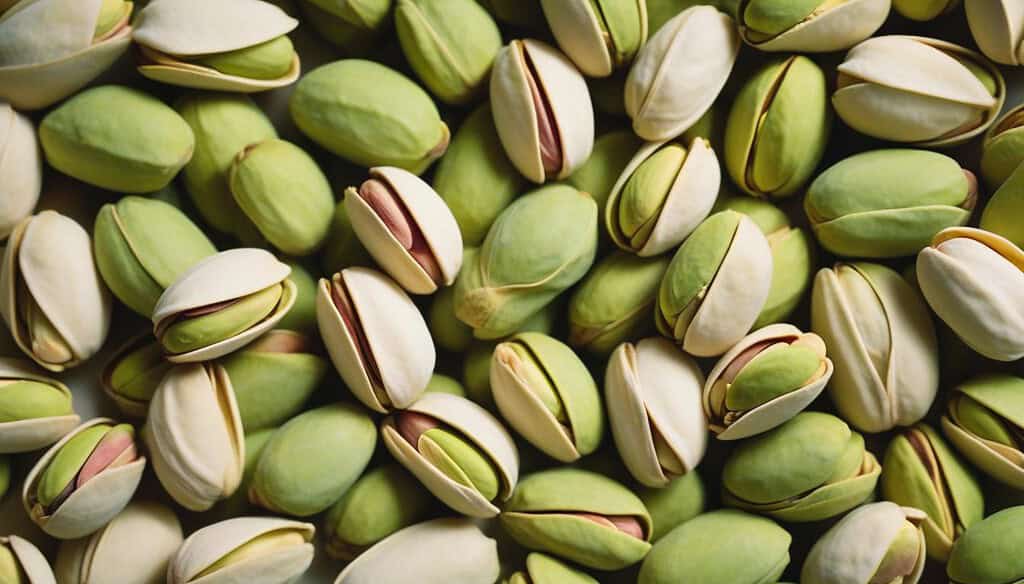
Anacardiaceae Fruits: Pistachio
Pistachio, one of the oldest cultivated nuts, has a storied history and remains a beloved member of Anacardiaceae fruits. Known for their vibrant green color and distinctively sweet, nutty taste, pistachios have been enjoyed for millennia in various cuisines, particularly in Middle Eastern and Mediterranean regions. The flavor of pistachios complements both savory and sweet dishes, making them a highly prized ingredient in a wide array of recipes.
Nutritionally, pistachios are a powerhouse. They provide a generous amount of plant-based protein, healthy fats, and fiber, supporting heart health and aiding in digestion. Pistachios are also rich in antioxidants, such as lutein and zeaxanthin, which promote eye health and contain significant amounts of potassium and vitamin B6, essential for nerve function and overall well-being. The presence of phytosterols in pistachios has been linked to cholesterol-lowering benefits, further highlighting their role in a balanced diet. With such a nutrient profile, pistachios are an ideal snack for people looking to boost their energy levels and nutrition.
Growing pistachios requires a specific climate, with hot, dry summers and cool winters being ideal for optimal nut production. Countries like Iran, the United States, and Turkey are some of the largest producers, benefiting from the Mediterranean climate that suits pistachio trees well. These trees have a long lifespan and can continue producing for decades, but they also demand patience, as it can take several years before they yield a significant harvest. The pistachio’s economic importance has led to intensive farming practices, but climate variability and water resource challenges remain concerns for sustainable cultivation.
The culinary potential of pistachios is impressive. They add crunch and flavor to everything from ice creams and pastries to roasted meats and salads. Ground pistachios are a common ingredient in desserts like baklava, while pistachio paste is a luxurious addition to confectionery creations. As one of the most unique Anacardiaceae fruits, pistachios have secured their status as both a nutritional powerhouse and a gourmet delight.
4. Anacardiaceae Fruits: Sumac

Anacardiaceae Fruits – Sumac
Sumac, an often overlooked yet essential member of Anacardiaceae fruits, is best known for its tangy, citrus-like flavor, which has made it a staple seasoning in Middle Eastern and Mediterranean cuisine. The dried, ground fruit of the sumac plant is used as a spice, adding a vibrant red hue and a zesty taste to dishes. This ancient ingredient has been used for centuries to brighten up flavors, and its unique profile makes it irreplaceable in many traditional recipes.
From a nutritional standpoint, sumac offers several health benefits. It is rich in antioxidants, which help fight inflammation and protect cells from damage caused by free radicals. Sumac also contains vitamin C and various polyphenols, contributing to its immune-boosting and anti-inflammatory properties. The fruit’s use in herbal medicine throughout history is well-documented, and research continues to explore its potential health benefits, including its role in blood sugar management and cardiovascular health. As with other Anacardiaceae fruits, sumac’s nutritional value adds to its culinary allure, making it a healthy and flavorful addition to meals.
Cultivation of sumac is relatively undemanding, as the plant is drought-resistant and well-suited to arid and semi-arid climates. It grows abundantly in the wild across regions of the Middle East, Southern Europe, and North Africa. The adaptability of sumac plants makes them a resilient part of the Anacardiaceae family, thriving in harsh conditions where other crops might struggle. This resilience has made sumac a valuable crop for local economies in areas where few other plants can survive.
The culinary applications of sumac are diverse. It is sprinkled over salads, mixed into marinades, or used as a flavoring agent for meats and vegetables. In the iconic spice blend za’atar, sumac plays a central role, offering a tangy contrast that elevates dishes. As one of the less familiar but incredibly versatile Anacardiaceae fruits, sumac continues to find its place in modern cooking, enriching dishes with its distinct and refreshing flavor.
5. Anacardiaceae Fruits: Yellow Mombin (Spondias)
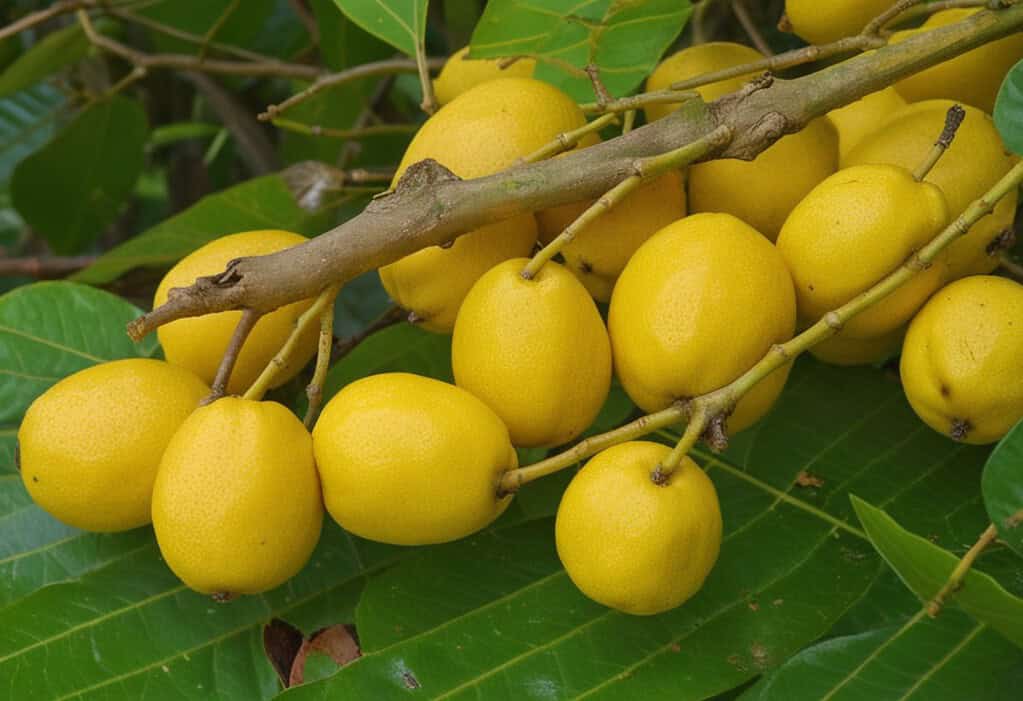
Anacardiaceae Fruits: Yellow Mombin (Spondias)
Yellow Mombin, scientifically known as Spondias mombin, is one of the lesser-known yet captivating Anacardiaceae fruits. It grows in tropical regions, particularly in the Americas, and is celebrated for its vibrant, golden-yellow color and unique flavor, which balances tart and sweet notes. The fruit has a juicy, fibrous texture, making it refreshing and perfect for consumption on a hot day. In many places, it is used to prepare drinks, jellies, and preserves, showcasing its adaptability and appeal in various culinary forms.
From a nutritional perspective, Yellow Mombin is packed with vitamin C, which supports the immune system and promotes healthy skin. It also contains dietary fiber, aiding in digestion and helping to maintain a balanced gut. Other nutrients, such as calcium and iron, contribute to bone strength and blood health, respectively. The fruit’s antioxidant content plays a significant role in combating free radicals, potentially reducing inflammation and protecting against chronic illnesses. As with other Anacardiaceae fruits, Yellow Mombin’s nutritional benefits make it a valuable dietary component.
Cultivation of Yellow Mombin thrives in tropical environments where warm temperatures and adequate rainfall are consistent. The tree is hardy, capable of growing in various soil types, including sandy and loamy soils. It is often grown not only for its fruit but also for its use in traditional medicine and as a source of hardwood. Farmers appreciate its fast-growing nature, although the fruit’s short shelf life presents challenges in terms of distribution and marketability. Despite these limitations, Yellow Mombin remains an important cultural and economic fruit in regions where it is widely grown and enjoyed.
Culinary uses of Yellow Mombin are vast. It is consumed fresh or transformed into flavorful juices and syrups. In some cultures, the fruit is fermented to create alcoholic beverages, while its pulp is often a key ingredient in ice creams and desserts. Its tangy taste also makes it a popular component in spicy sauces and chutneys, adding a unique twist to meals. As one of the more unusual Anacardiaceae fruits, Yellow Mombin continues to intrigue and delight those who appreciate bold, tropical flavors.
6. Anacardiaceae Fruits: Brazilian Pepper (Pink Peppercorn)
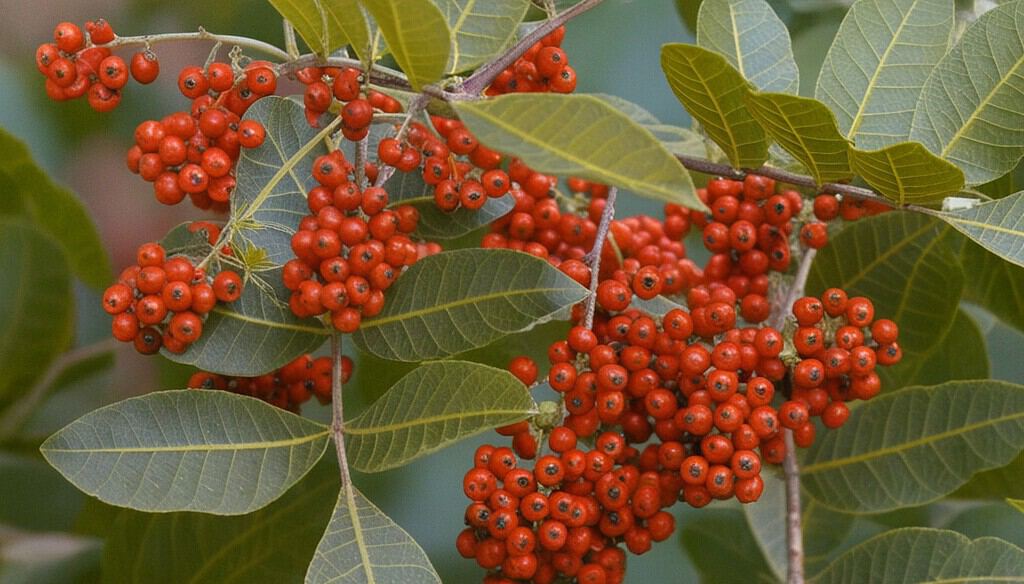
Anacardiaceae Fruits – Brazilian Pepper (Pink Peppercorn)
Brazilian Pepper, also known as Pink Peppercorn, stands out among Anacardiaceae fruits for its use as a spice rather than as a traditional fruit. The small, reddish-pink berries are harvested from the Brazilian pepper tree, native to South America. While they are called “peppercorns,” they are not true peppers, but they have a similar pungent and slightly sweet flavor that adds a delicate heat and unique aroma to culinary dishes. The popularity of Pink Peppercorn has grown worldwide, making it a trendy ingredient in gourmet cuisine.
Nutritionally, Pink Peppercorns offer more than just flavor. They are known for containing essential oils that provide anti-inflammatory and antimicrobial properties, making them beneficial for overall health. They also contain antioxidants that help protect the body from oxidative damage and support the immune system. Though not a major source of vitamins or minerals, these Anacardiaceae fruits contribute to a well-rounded diet, especially when used as part of a spice blend to enhance the flavor and aroma of meals. Their health-promoting compounds make them valuable, even in small amounts.
Cultivating Brazilian Pepper trees requires a warm climate, and these trees often thrive in tropical and subtropical environments. However, their invasive nature in some regions has led to environmental concerns. These trees spread rapidly and can outcompete native vegetation, altering local ecosystems. Despite this, the trees are also admired for their ornamental appeal, with their clusters of red berries adding vibrant color to landscapes. In areas where cultivation is carefully managed, Brazilian Pepper continues to be harvested for culinary use.
The culinary applications of Pink Peppercorn are diverse and growing. They are often used in spice rubs, salad dressings, and marinades, adding a subtle yet complex flavor profile. Pink Peppercorn can also be found in desserts, infusing a gentle heat into ice creams, chocolates, and baked goods. Chefs experiment with these Anacardiaceae fruits to create innovative dishes that surprise and delight the palate. Their adaptability and intriguing flavor make Pink Peppercorn a valued spice in kitchens around the world.
7. Anacardiaceae Fruits: Marula
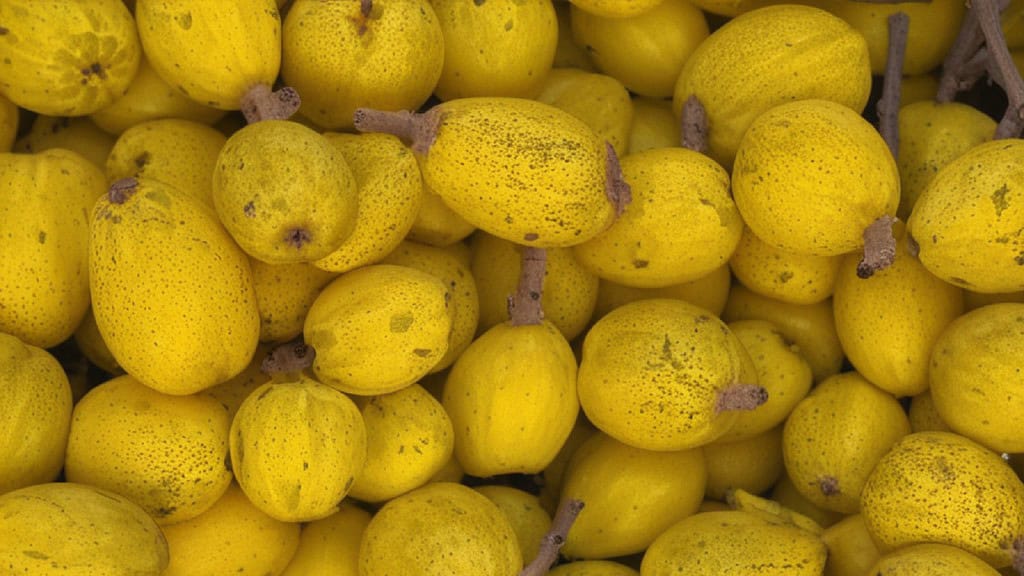
Anacardiaceae Fruits – Marula
Marula is a fascinating member of Anacardiaceae fruits, known for its cultural significance and wide range of uses. Native to Africa, the Marula fruit is yellow-green when ripe, with juicy, aromatic flesh that carries a tart yet sweet flavor. Elephants famously enjoy the fruit, and their fondness for it has become part of Marula’s rich lore. The fruit is also a source of economic activity, particularly in rural areas, where it is harvested and processed into a variety of products, from beverages to skincare oils.
Nutritionally, Marula is a powerhouse. It is loaded with vitamin C, providing several times the amount found in an orange, which helps boost immunity and enhance skin health. The fruit also contains a healthy mix of antioxidants, which protect against cellular damage, and essential minerals like potassium, magnesium, and calcium. The Marula kernel yields an oil that is rich in fatty acids. It is used in cosmetics for its moisturizing and skin-protective properties. As with other Anacardiaceae fruits, the Marula’s nutritional content contributes to its reputation as a health-promoting natural food.
Marula trees are drought-resistant and thrive in Africa’s warm savannas and woodlands. They are an integral part of the ecosystem, supporting wildlife and providing shade and sustenance for many animal species. Cultivating Marula is often a community-based effort, with entire villages participating in harvesting and processing. The fruit is collected and transformed into various products, such as Amarula cream liqueur, a globally recognized alcoholic beverage, and Marula oil, prized for its beauty benefits. These activities provide income for communities and make Marula one of the most important Anacardiaceae fruits with immense economic significance.
Culinary uses of Marula are extensive. The fruit can be eaten fresh or used to make juices, jams, and alcoholic beverages. Fermented Marula juice produces a potent, tangy drink, while the fruit’s pulp is used in sauces and desserts. Marula oil, extracted from the kernels, is used not only in cosmetics but also in cooking, where it adds a subtle, nutty flavor. As one of the most culturally significant Anacardiaceae fruits, Marula continues to be celebrated for its versatility and the positive impact it has on local economies.
8. Anacardiaceae Fruits: Hog Plum (Ambarella)

Anacardiaceae Fruits – Hog Plum (Ambarella)
Hog Plum, also known as Ambarella, is a tropical fruit that brings a tangy, refreshing flavor to the Anacardiaceae fruits family. The fruit is oval-shaped, with a tough, fibrous pit in the center and greenish-yellow skin when ripe. It is cultivated in various tropical regions, from Southeast Asia to the Caribbean, and is often enjoyed for its crisp, juicy flesh that delivers a burst of tartness. In many countries, Hog Plum is a popular ingredient in savory and spicy dishes, where its acidity complements bold flavors.
Hog Plum is rich in essential vitamins and minerals, making it a healthy addition to the diet. It contains high levels of vitamin C, which strengthens the immune system and promotes collagen production for healthy skin. The fruit also offers vitamin A, which is crucial for eye health, and fiber, which aids in digestion. The antioxidants present in Hog Plums help to neutralize free radicals, reducing the risk of chronic diseases. This combination of nutrients ensures that Hog Plum holds its place among valuable Anacardiaceae fruits, contributing significantly to dietary wellness.
Growing Hog Plum requires a warm, tropical climate with plenty of sunlight and well-drained soil. The trees are hardy and can withstand a range of soil conditions, making them versatile and relatively easy to cultivate. They produce abundant fruit, and their resilience to environmental stress makes them a reliable crop for farmers. However, like many Anacardiaceae fruits, Hog Plum faces challenges from pests and diseases, which must be managed to maintain healthy yields and fruit quality.
Hog Plum’s culinary uses are diverse and flavorful. It is eaten fresh, sprinkled with salt or chili powder to enhance its tartness, or used in chutneys, pickles, and salads. In some regions, the fruit is blended into refreshing drinks, while the young leaves are used in salads or cooked as a vegetable. The fruit’s tangy profile also makes it a favorite in savory dishes, where it adds a zesty kick. As a vibrant and versatile member of Anacardiaceae fruits, Hog Plum continues to be cherished for its bold taste and nutritional benefits.
Disclaimers: *This article is only for informational purposes.
**Do not make your important decisions based solely on the information provided in this article. Do your own research.
***Information in this article may vary or may get updated in the future.
****Contact a doctor or a medical professional for any medical emergency.
Read More Science and Space Articles
- 8 Incredible Musaceae Fruits You Need to Try Right Now
- 8 Incredible Vitaceae Fruits: Nature’s Tasty Treasures
- 8 Incredible Rosaceae Fruits You Need to Discover
- 8 Amazing Citrus Fruits That Will Brighten Your Day
- 8 Non-CO₂ Greenhouse Gasses That Are Worst Than CO₂
- Chemistry: 8 Unique Ways to Become Efficient At It
- 8 Ways Water Crisis is Worsened by Global Climate Change
- 8 Amazing Ways Brain Anatomy is Altered by New Learning
- 8 Disastrous Ways Deforestation Destroys Biodiversity
- Mathematics: 8 Interesting Ways To Become Efficient At It
- 8 Worst Ways Global Climate Change Hurts The Impoverished
- Danger Of Environmental Damage: 8 Ways A Person Can Help
- Eradication Of Poverty: 8 Critical Ways Science Helps
- STEM Fields: 8 Important Reasons Why You Must Learn Them
- Making Your Kid Efficient At STEM Subjects: 8 Important Steps
- Making Your Kid Science Enthusiast: 8 Important Steps
- Becoming A NASA Aspirant: 8 Important Steps You Must Follow
- Top 8 Important Wellness Habits That You Must Follow
- Top 5 Amazing Whole Grains That Are Healthier Than Rice
- Indian Space Program: 8 Incredible Achievements
- China’s Space Program: 5 Amazing Accomplishments
- Discoveries by JWST: 10 Incredible Findings of The Telescope
- NASA’s MOXIE Creates O2: Big Step Towards Mars Colonization
- Top 5 Amazing Properties of Time That Defy Common Sense
- 10 Factors for Emergence of Intelligent Life in The Universe
- Space Science: 6 Vital Reasons Why We Should Invest in It
- Solar System: 10 Astonishing Uniqueness of our star system
- Our Universe: An Incredible Journey of 13.7 Billion Years
- Top 6 Solar System Objects That Might Destroy Life On Earth
- Certain End of The Universe: 4 Forces of Nature to Watch Out For
- Big Bang: An Incredible Start of Universe 14 Billion Years Ago

